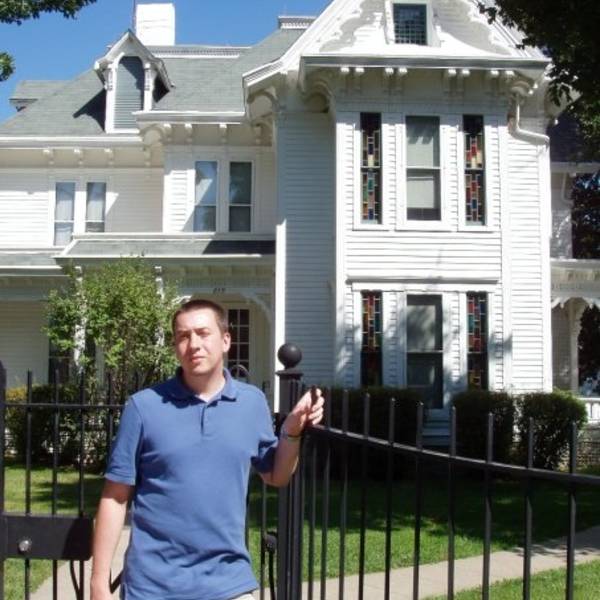National parks are forever. Everything else sure changes, though.
People enter and leave our lives, buildings are torn down, fields and forests are developed beyond recognition. But not national parks. They are created to preserve a place or time for perpetuity. One of the reasons I work at NPCA is to consciously help protect their integrity from the uneven world that surrounds them.
I was raised in southwest Missouri, just five miles from Pea Ridge National Military Park, one of the nation’s best-preserved Civil War battlefields, and I have enjoyed visits to dozens of other amazing parks and historic sites around the country in the years since my childhood. Perhaps my most precious memories of those national parks are from the summer of 1982, when my parents loaded up me and my three older brothers in our Ford Bronco and embarked on that American rite of passage—the family road trip.
I was just five when we left our family farm in the Ozark Mountains to travel halfway across the country to see both sets of grandparents in California. Luckily, my parents wanted us to see more than just cars on the freeway, so they chose one national park to see on the way out and another for the way back. Looking back, those two parks retain more vibrancy in my memory in the 31 years since that trip than side trips to both Disneyland and Universal Studios. Needless to say, any place that can trump amusement parks in the memories of a five-year-old boy would have to be pretty spectacular.
My parents chose Grand Canyon National Park, that revered and spiritual place, for our journey west. I still remember one of my brothers waking me as we arrived at the entrance. I had been curled up under a blanket in the storage compartment in the back of the Bronco. Even the view from inside the car was magnificent. I remember looking out in awe through the windshield and across the parking lot at the colorful strata running up and down the massive walls. It was not until we were closer to the edge that I realized the true magnitude of the canyon. We had cliffs and rock walls in the Ozarks too, but nothing like this.
We walked along the edge and drove to different vistas along the way, taking time to enjoy each new view. Even the little lizard that ran past me near the Desert View Watchtower remains etched in my mind—perhaps because I jumped back about three feet in fear when it got too close. My two oldest brothers, 15 and 16, were much more daring and wanted to hike all the way to the bottom. They even joked about dangling me over the edge, a threat that left me clinging tightly to my mother’s leg in fear that they would actually do it. Though we didn’t get to the canyon floor, we gathered in the customary family photos with the canyon in the background and basked in the glory of nature, just as Theodore Roosevelt had done when he visited 74 years earlier.
As powerful as my memories of the Grand Canyon remain, the visit to Mesa Verde National Park on the way home is even fresher and burns even more intensely in my mind. I can still close my eyes and smell the desert, see the adobe walls, and feel the heat of the sun on my skin. Did my lifelong interest in history start there? It was at least enhanced by this special place. The ruins left behind by the Ancestral Puebloan peoples seemed so complete as we walked through them, listening to a ranger breathe life into each room and living area, describing the various ceremonies and everyday rituals that took place in that very spot years ago.
My brothers helped my little legs scale the ladders leading up the walls of the ruins, and together the four of us explored the remnants of the ancient civilization. The sheer size and magnificence of the Balcony House boggled my mind. Its complexity and massiveness dwarfed any of the buildings I saw back home on a daily basis—and to think that it was built some 800 years earlier. Scale models inside the visitor center showed how the structures would have appeared hundreds of years earlier, and looking down at them, I imagined how life would have been for me as a child living among them.
Everyone hopes to make memories like these, so enduring and meaningful that they never completely fade. The specifics may change from family to family, whether it’s seeing Old Faithful for the first time, backpacking in Glacier, or sharing a boat ride through the Everglades. But I believe that national parks are exceptional by nature, the perfect places to create these most special kinds of memories.
Our family would never again make a trip quite like that one. My parent’s divorce in 1989 and my oldest brother Wes’ death in 1994 permanently dashed the possibility of repeating the dynamic of that 1982 trip. Despite those changes, two aspects remain: the beauty and wonder of those two national parks, and those vibrant memories climbing the ladders at Mesa Verde and peering over the edge of the Grand Canyon with my parents and my brothers at my side.
Stay On Top of News
Our email newsletter shares the latest on parks.
This is why we have national parks, so that generations from now visitors will continue to be awed and inspired by their wonders, and so memories that last a lifetime and beyond will keep being made. So the next time you’re planning a family vacation, be sure to make a national park part of it. It’s one of those rare investments where the benefits can last forever.
About the author
-
General
-
- NPCA Region:
- Southwest
